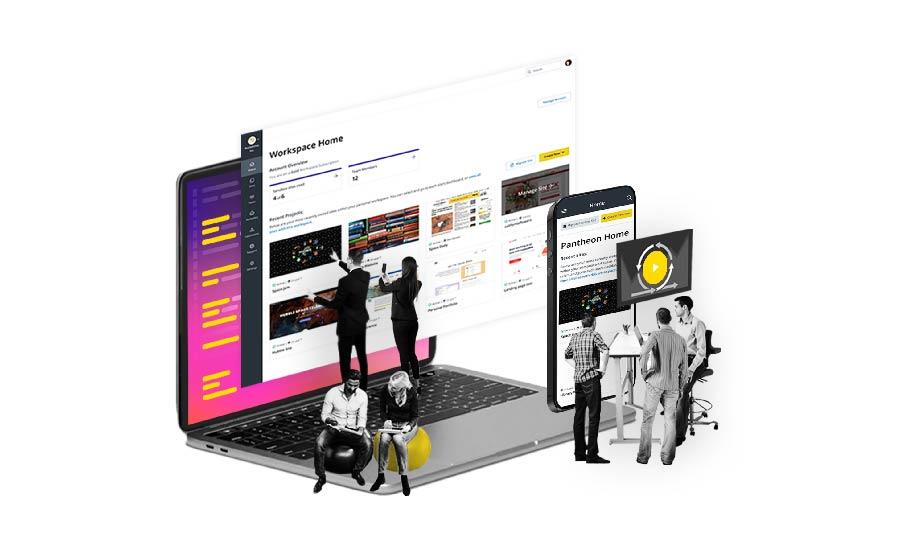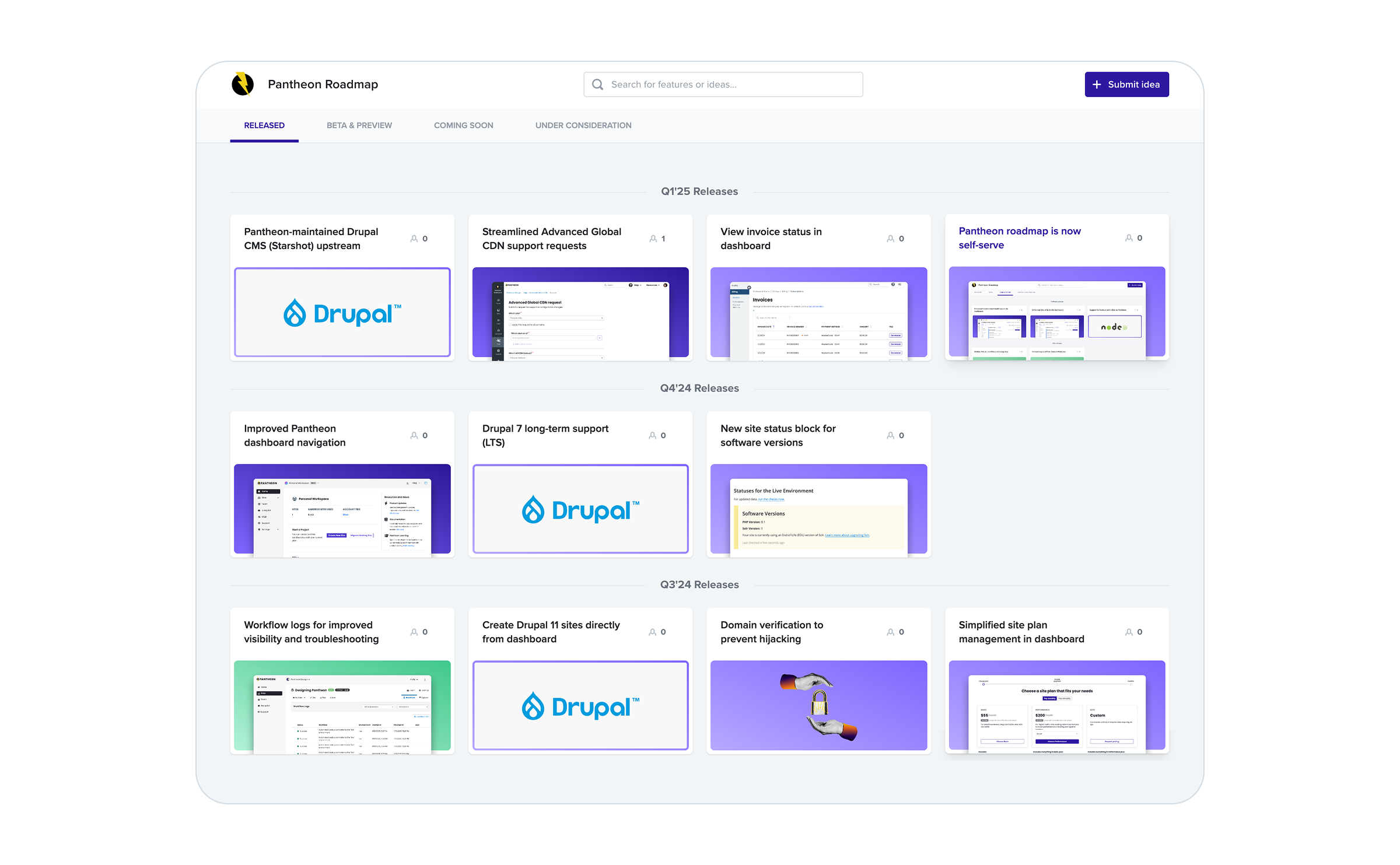How Agile Methods Can Boost Your Bottom Line
Image

Time is money, and many businesses are lacking in both. Straying from initial projections with a boost here or a cut there can mean the difference between investing in a much-needed area and streamlining another. For enterprise companies especially, these decisions can lead to drastic jumps in output and profitability.
Agility often gets inserted into conversations about productivity and process because of how it makes the way we work faster, more seamless, and more cohesive. While those small-scale benefits are always welcome, an agile approach to business can ultimately translate into a better bottom line for the entire company.
The True Value of Agility
Pantheon encourages an agile digital marketing approach via WebOps that breaks down traditional business silos to help companies boost productivity and cut costs. This comprehensive outlook pulls in specialists from DevOps, visual design, content marketing, and other areas to provide a 360-degree perspective to marketing.
In practice, agile marketing replaces traditional waterfall marketing processes with short, iterative sprints that adjust operations based on real time insights and feedback. These teams can adjust by the month, quarter, or year to ensure they have the information necessary to build updated campaigns.
If you’ve ever deconstructed, ideated, and executed a campaign, you know the hefty costs of logjams, frequent starts and stops, and other disruptions that lead to a change in scope. It’s not cheap to reassess and recalibrate something frequently. With an agile approach, the framework is in place for teams to experiment and adjust without any significant detriment to an initiative’s big picture or financial outlook. This can be achieved by implementing a WebOps platform.
How ING Transformed their Business With an Agile Framework
Dutch banking group ING is a famous example of a company that created positive change (and increased profits) by shifting to an agile approach. Their goals were to be quicker to market, reduce impediments, and improve the customer journey across all channels—from visiting a branch in-person, to investing money online via the ING website.
By implementing an agile structure that included nine-person "squads" organized into 13 "tribes", the team at ING Netherlands successfully bolstered productivity and increased customer satisfaction by several points.
"The key has been adhering to the “end-to-end principle” and working in multidisciplinary teams, or squads, that comprise a mix of marketing specialists, product and commercial specialists, user-experience designers, data analysts, and IT engineers—all focused on solving the client’s needs and united by a common definition of success," the former chief operating officer of ING Netherlands recently told McKinsey.
This is a telling example of organizational agility leading to improved productivity and greater profitability. But the same can be said for individual teams within an organization—if a marketing team works cross-functionally with clearly defined goals, the outputs of that team are likely to improve, leading to a deeper understanding of customer behavior and positively impacting the organization's bottom line.
How to Reap the Rewards of an Agile Approach
Agility leverages collaboration to help conserve time while avoiding red tape, disruptions, and miscommunications. By bringing multiple stakeholders into the fold and giving them resources such as time and technology, companies can maximize their potential and bottom line. Here’s how:
1. Prioritize work-life balance. The modern worker craves equal parts professional and personal fulfillment, evidenced by the 72% of respondents to a survey saying work-life balance matters to them. For stakeholders trying to stave off possible burnout, finding that balance through an agile approach is a matter of dollars and cents.
For example, if a project gets built out using a scrum-like system, leaders can add time-boxed deliverables that a team must hit. Organizations can use these deadlines to assess the amount of time required for different tasks related to a project, making time and budgetary estimates for completion to ensure money and labor spends are maximized.
Agile methodology allows teams to examine everything continually (including these deadlines) and improve processes for everyone’s benefit.
2. Find beauty in simplicity. It’s tempting to try and take on every idea that comes to mind. Instead, use an agile approach to pare down your creative ambition to fewer outlets while maximizing the effectiveness of singular projects.
In other words, break big ideas down into more bite-sized undertakings. For example, let’s say you’re revamping your website copy and have a few different options for the homepage tagline and hero imagery. An agile method would be to prioritize which messaging and imagery you think would have the greatest impact and then test it through measurable tools like a light-weight digital ad campaign, user testing or interviews with contacts in your network, and/or website analytics and a/b testing tools.
These test results will give you the signal you need to know whether your new messaging will result in a positive or negative change to your North Star metrics. If a test fails, try another option; if a test is successful, dig in more and iterate to see whether you can increase the impact.
Gone are the days of trying to appease a room full of opinionated stakeholders with fancy presentations and persuasive speech. Let the numbers speak for you while getting things done faster.
3. Keep the feedback loop open. You don’t need to plan a big research project with every new initiative. In fact, a Vernon Research Group study found that companies spend $4,000-$6,000 for one focus group without participant incentives. Customer research is vital, but it’s also costly. As a result, you should make sure to use every communication channel at your disposal to collect customer insights and implement feedback.
An agile approach, in this case, measures performance using a build-measure-learn cycle, which gathers user responses and instantly applies it to operations. When this becomes a normal part of the feedback process, gathering customer input feels less like a side project and more like a to-do item that is part of a project’s standard scope and budget.
At the end of the day, the bottom line is the most important metric for most businesses. A shift to an agile mindset can help ensure it’s constantly moving in the right direction, with a clear strategy, smooth processes, engaged team members, and, most importantly — satisfied customers.


